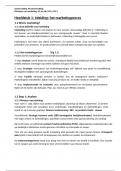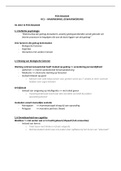Samenvatting
Samenvatting artikelen en hoorcolleges regions in development: Asia
- Instelling
- Universiteit Utrecht (UU)
Samenvatting van alle artikelen en hoorcolleges van Asia voor het vak Regions in Development. Geschreven in eenvoudig Engels, zodat het goed te begrijpen is en je het niet zelf hoeft te vertalen voor het tentamen. Perfecte voorbereiding voor het tentamen!
[Meer zien]












